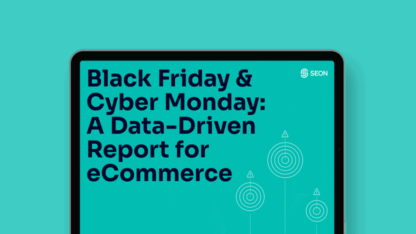As digital commerce accelerates, fraud accelerates faster. Retailers and eCommerce outfits today are operating in an unforgiving fraud landscape. AI-powered scams, synthetic identities and fraud-as-a-service networks are scaling in lockstep with the tools meant to improve customer experience. Every advancement — from instant refunds and one-click checkouts to digital wallets and loyalty ecosystems — opens a new vector for exploitation. Global fraud losses are projected to reach $48 billion this year, and retail sits squarely in the crosshairs.
Yet despite the rising threat, most retailers remain unprepared. While other sectors ramp up investment, nearly 1 in 5 retailers expect budget cuts to their fraud teams. Meanwhile, outdated tools, internal silos and the relentless pressure to keep customer friction low leave organizations exposed across the entire shopper journey, from account signup to post-purchase support. Fraud prevention must evolve into a strategic growth driver that protects revenue, enhances brand trust and unlocks seamless customer experiences without compromise.
Key Industry Trends Reshaping Fraud Prevention
Retailers are racing to adapt to a world where every transaction must be verified in real time, and every decision justified. While fraud budgets lag behind sector needs, customer expectations are soaring. The result? Fraud prevention can no longer be siloed. It must become a cross-functional, ROI-driving strategy.
Key trends include:
- 70% of retailers rely on real-time transaction monitoring as their #1 defense
- 59% say digital wallets are now their most vulnerable fraud frontier
- 25% rank customer experience as the most valuable outcome of their fraud program, ahead of loss reduction or detection accuracy
- AI is viewed as essential, but only 48% of retailers currently see measurable value from implementation
How eCommerce Differs From Other Sectors
Retail’s fraud challenge is uniquely high velocity. Unlike traditional finance or services, eCommerce demands sub-second accuracy across fragmented signals, all while staying invisible to the customer. Add to that the rise of bonus abuse, synthetic IDs and FaaS (Fraud-as-a-Service), and the stakes climb even higher. The retail sector’s defining fraud dynamics:
- Fraud prevention must be frictionless to protect conversion rates
- Security tools like device intelligence and behavioral biometrics are gaining favor for being customer-friendly
- Most teams still fail to track the total cost of fraud, including churn, brand damage and operational overhead.
Emerging Fraud Threats in the Checkout Age
As shopping habits shift to one-click payments, instant refunds and crypto-based rewards, fraudsters adapt in lockstep. The fastest-rising fraud threats include:
- Phishing and takeover attacks via digital wallets (59%)
- Synthetic identity fraud through crypto platforms (40%)
- Bonus abuse and loyalty fraud using bots and stolen credentials (15%)
Top 3 Takeaways for eCommerce Fraud Leaders
1. Real-Time Risk Is the New Standard
Fraud defense must now mirror the speed of digital payments. Static reviews or manual workflows can’t keep up. Real-time risk scoring — from login to refund — is essential.
2. AI Is Not a Silver Bullet, Yet
AI’s potential is enormous, but it must be explainable and trusted. Retailers need systems that automate without becoming black boxes, especially when justifying actions to regulators or customers.
3. Think Beyond Chargebacks
Fraud drains more than revenue. It stalls product innovation, inflates support costs and erodes customer trust. Measuring only direct losses misses the true scope of the problem.
Read the full eCommerce report now and discover how leading retailers are rethinking fraud prevention.
Download Here








